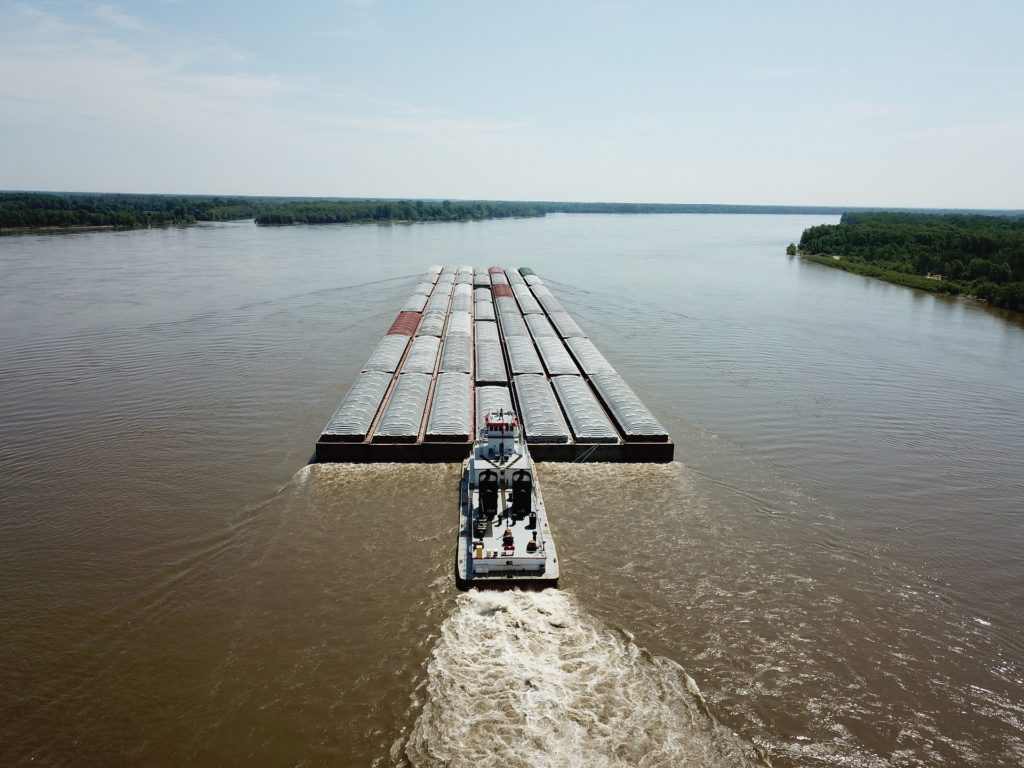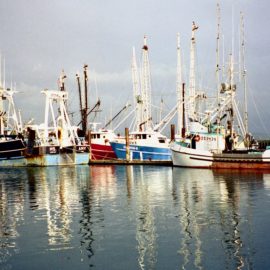
The muddy Mississippi is the site of the Mid-Barataria Diversion and New Orleans was the sole backer – until St Tammany Parish changed their mind and now supports it.
After coming out against the $2 billion Mid-Barataria Sediment Diversion project in Plaquemines Parish more than three months ago, the St. Tammany Parish Council is no longer opposing it. Instead, the council is now on record urging the state to put measures in place to minimize any of the project’s negative impacts. The change follows an appearance at the council’s August meeting by Chip Kline, chairman of the Coastal Protection and Restoration Authority Board, who told members he was discouraged that they opposed the diversion without giving the agency a chance to make its case. At that time, he called the project, designed to send freshwater into the Barataria Basin’s marshes to capture sediment, the cornerstone of the state’s 50-year coastal restoration plan. He said then that the parish’s resolution opposing it put St. Tammany in the middle of a political circus. But if the initial resolution stirred controversy, so did the new version, which stated explicitly that it is a change from the council’s earlier position.
nola.com
Of course the loudest and most highly ranked opponent chimed in with his disapproval.
Lt. Gov. Billy Nungesser urged the Parish Council to stick with its earlier anti-project position. “Yes, it built New Orleans — that’s a great line,” Nungesser said, referencing the sediment in the riverwater that scientists say builds land. But the Mississippi isn’t the same as it was 1,000 years ago or even 50 years ago, he said. The Mississippi is polluted and 98% of the sediment it carries is trapped behind dams upstream, he said. “It’s me and a bunch of fishermen” opposing the plan, he said. “I’m not going to let them destroy our coast,” Nungesser said. Council member Rykert Toledano, who authored the initial resolution, said that he has a charter fishing business in Delacroix and has seen first-hand the destruction caused by diversions. He and Council members Jimmie Davis and Martha Cazaubon had worked on the new resolution, but Toledano objected to language in the new resolution that says it “represents a change” from St. Tammany’s earlier position. He attempted to amend the resolution, to remove that phrase, but his motion failed.
Hopefully the opponents will be in a rear guard action and losing support. As to changing their mind, I think a no to a yes is a change.
Cazaubon said that the council voted in May after hearing only one person speak about the issue from a fisheries perspective. “I seconded a motion thinking we had heard all there was to hear. I was mistaken because we were not educated on both sides,” she said. “This issue has two sides to it.” After that meeting, Cazaubon said she and Davis went to the Coastal Restoration and Protection Authority for more information. “This is not fly by night. There is thought going into it,” she said, adding that dredging is still part of the state’s strategy for rebuilding land. Council member Jerry Binder asked how many parishes have taken a position on the project, and Nungesser said that St. Bernard and Plaquemines parishes have opposed it, as have the towns of Lafitte and Grand Isle. “It kind of makes me wonder, what we’re doing in this?” Binder said. “This is not me trying to knock Mr. Toledano, my colleague…We need to learn sometimes from our mistakes. Did we even know what we were voting about? I think the answer to that is ‘no.'”
This is the problem by voting by party and not looking at the issue from both sides. Make an informed decision. In Nungesser’s case nothing the Coastal Authority says will change his mind. “My mind is made up don’t confuse me with the facts.”



